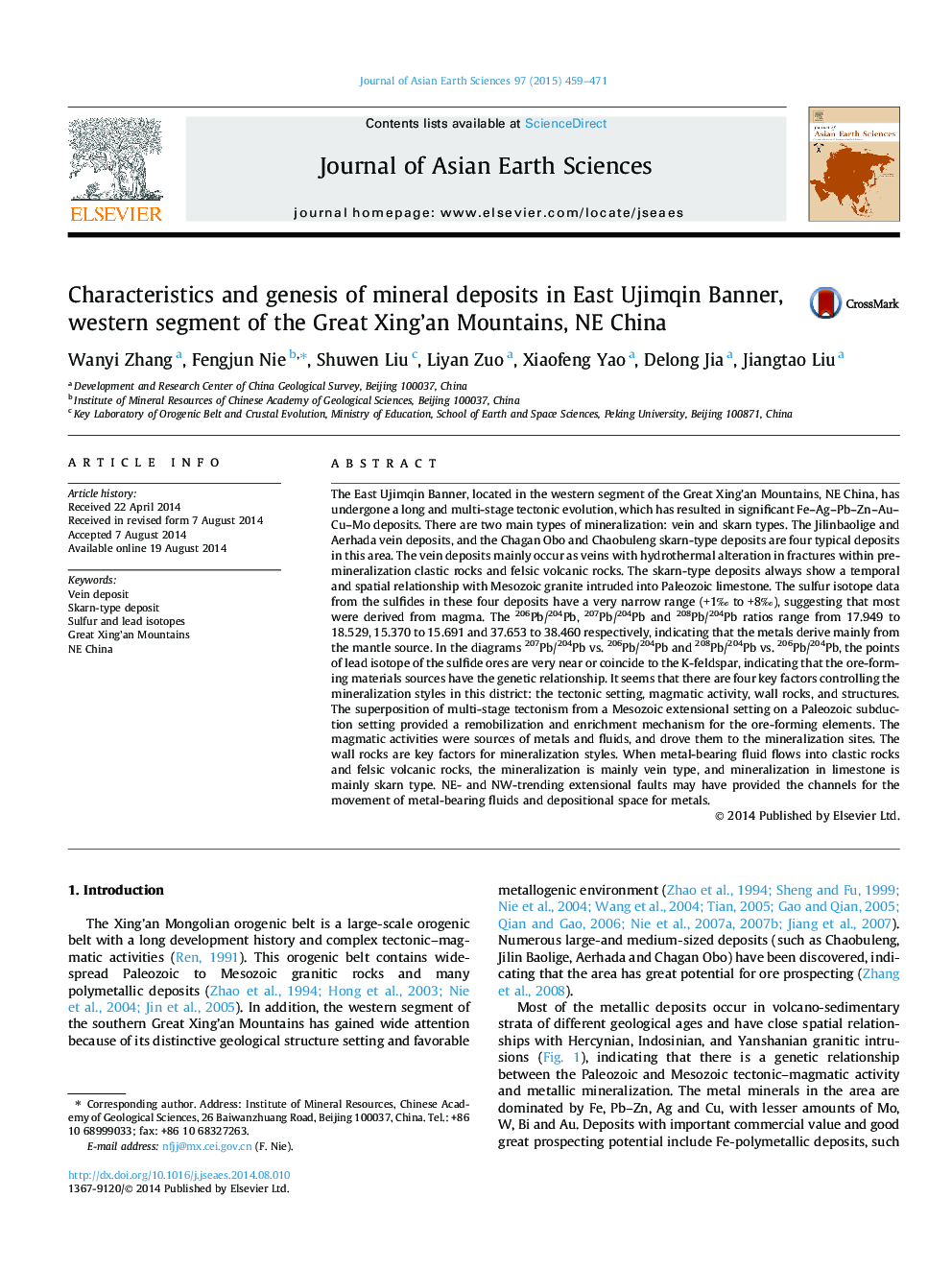| Article ID | Journal | Published Year | Pages | File Type |
|---|---|---|---|---|
| 4730449 | Journal of Asian Earth Sciences | 2015 | 13 Pages |
•East Ujimqin Banner has great potential for ore prospecting.•The main metallic deposits in the area are vein deposits and skarn-type deposits.•Strata, tectonics, and magmatic rocks controlled the formation of the two types of deposits.
The East Ujimqin Banner, located in the western segment of the Great Xing’an Mountains, NE China, has undergone a long and multi-stage tectonic evolution, which has resulted in significant Fe–Ag–Pb–Zn–Au–Cu–Mo deposits. There are two main types of mineralization: vein and skarn types. The Jilinbaolige and Aerhada vein deposits, and the Chagan Obo and Chaobuleng skarn-type deposits are four typical deposits in this area. The vein deposits mainly occur as veins with hydrothermal alteration in fractures within pre-mineralization clastic rocks and felsic volcanic rocks. The skarn-type deposits always show a temporal and spatial relationship with Mesozoic granite intruded into Paleozoic limestone. The sulfur isotope data from the sulfides in these four deposits have a very narrow range (+1‰ to +8‰), suggesting that most were derived from magma. The 206Pb/204Pb, 207Pb/204Pb and 208Pb/204Pb ratios range from 17.949 to 18.529, 15.370 to 15.691 and 37.653 to 38.460 respectively, indicating that the metals derive mainly from the mantle source. In the diagrams 207Pb/204Pb vs. 206Pb/204Pb and 208Pb/204Pb vs. 206Pb/204Pb, the points of lead isotope of the sulfide ores are very near or coincide to the K-feldspar, indicating that the ore-forming materials sources have the genetic relationship. It seems that there are four key factors controlling the mineralization styles in this district: the tectonic setting, magmatic activity, wall rocks, and structures. The superposition of multi-stage tectonism from a Mesozoic extensional setting on a Paleozoic subduction setting provided a remobilization and enrichment mechanism for the ore-forming elements. The magmatic activities were sources of metals and fluids, and drove them to the mineralization sites. The wall rocks are key factors for mineralization styles. When metal-bearing fluid flows into clastic rocks and felsic volcanic rocks, the mineralization is mainly vein type, and mineralization in limestone is mainly skarn type. NE- and NW-trending extensional faults may have provided the channels for the movement of metal-bearing fluids and depositional space for metals.
